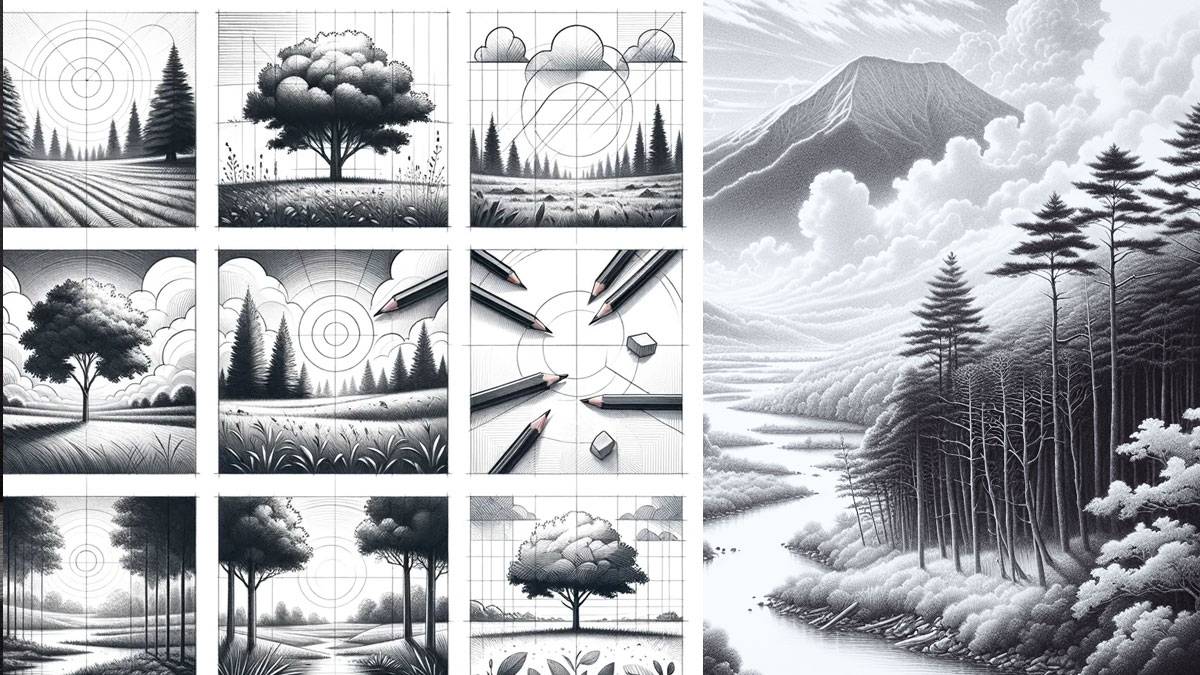Unlock the mystery behind creating landscape pencil drawings that are so captivating, that they’re destined for viral fame. With our easy-to-follow tips, prepare to watch your artwork steal the spotlight and your social notifications hit overload. Get ready for a flood of ‘How did you do that?!’ from admirers.
The Beauty of Landscape Pencil Drawings
Landscape pencil drawings are a captivating form of art that allows artists to express the beauty of nature through their creative interpretations. In this section, we will explore the world of landscape pencil drawings, from their introduction to the reasons why they are chosen as an art form.

Introduction to Landscape Pencil Drawings
Landscape pencil drawings involve the use of pencils to create intricate and detailed representations of natural scenery. Artists use various shading and texturing techniques to capture the essence and beauty of landscapes, including mountains, forests, lakes, and more.
The versatility of pencil drawings allows artists to capture the intricate details of nature, from the texture of tree bark to the delicate play of light and shadow on the landscape. Pencil drawings can range from simple and minimalistic to highly detailed and realistic, depending on the artist’s style and preference.
Why Choose Landscape Drawings as an Art Form
There are several reasons why artists choose landscape drawings as a preferred art form. Firstly, landscape drawings provide an opportunity to connect with nature on a deeper level. By carefully observing and sketching natural elements, artists can develop a greater appreciation for the beauty and intricacy of the world around them.
Landscape drawings also offer a sense of tranquility and serenity. The process of creating a peaceful and picturesque landscape on paper can be a therapeutic and relaxing experience for both the artist and the viewer. It allows individuals to escape the demands of everyday life and immerse themselves in the calming beauty of nature.
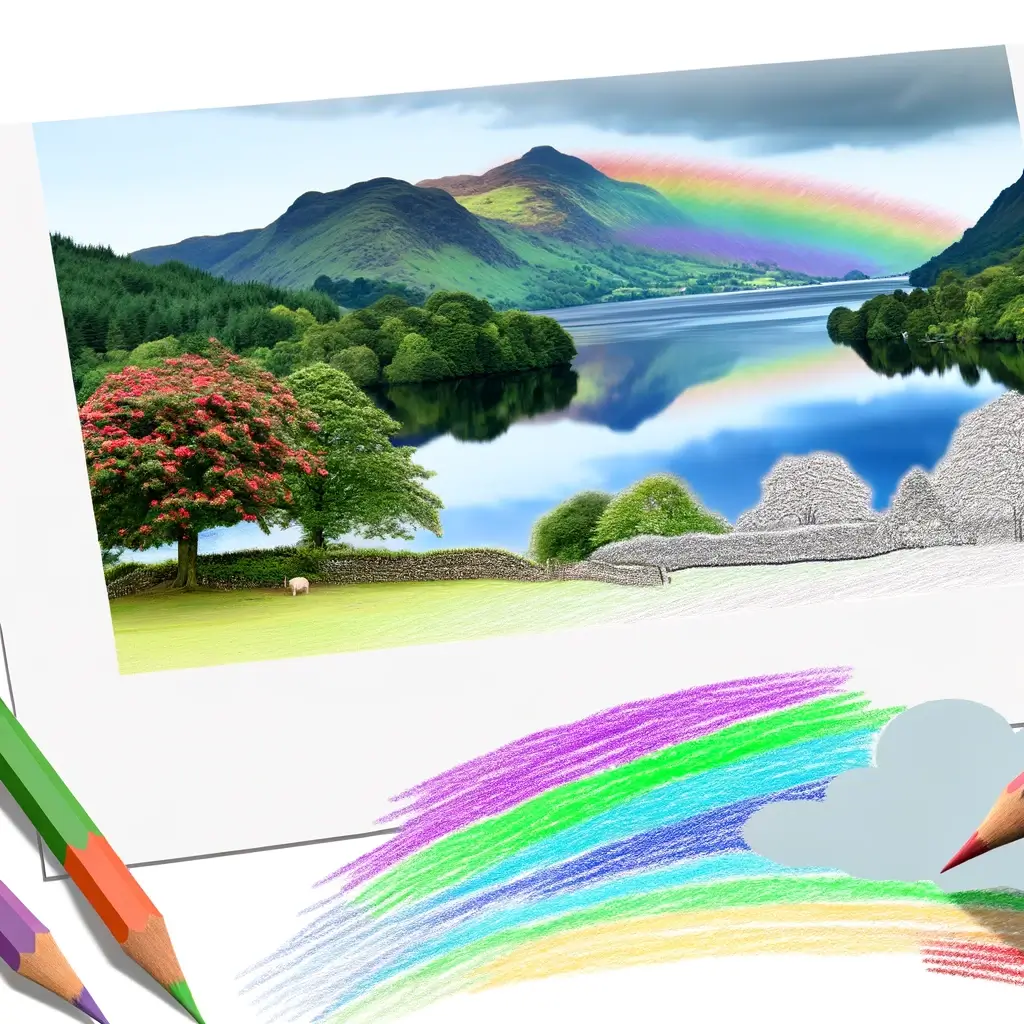
Additionally, landscape drawings provide a platform for self-expression and creativity. Artists can infuse their style and interpretation into their drawings, expressing their unique perspective of the world. Whether it’s a whimsical and playful representation or a realistic and detailed portrayal, landscape drawings allow artists to showcase their artistic skills and vision.
By exploring the world of landscape pencil drawings, artists can embark on a creative journey that combines their love for art with their appreciation of nature. With the right techniques, tools, and inspiration, anyone can create captivating and visually stunning landscape drawings.
Getting Started with Landscape Pencil Drawings
Before embarking on your journey into the world of landscape pencil drawings, it’s important to familiarize yourself with the essential tools and materials needed as well as the basic techniques involved in this art form.
Essential Tools and Materials
To create stunning landscape pencil drawings, you’ll need a few essential tools and materials. Here’s a list of what you’ll need to get started:
| Tools and Materials |
|---|
| Graphite pencils (ranging from HB to 6B) |
| Erasers (kneaded eraser and vinyl eraser) |
| Drawing paper or sketchbook |
| Drawing board or a hard surface to work on |
| Pencil sharpener |
| Blending stumps or tortillons |
| Fixative spray (optional, for protecting finished drawings) |
Having a range of graphite pencils allows you to achieve different levels of darkness and shading in your landscape drawings. The softer pencils (such as 4B or 6B) are useful for creating darker areas, while the harder pencils (such as HB or 2H) are ideal for lighter areas and fine details.
A kneaded eraser is a versatile tool that can be shaped and manipulated to erase small areas or create highlights by lifting graphite from the paper. A vinyl eraser is useful for larger areas or more precise erasing.
Choose a good-quality drawing paper or sketchbook that is suitable for pencil drawings. The paper should have a smooth surface to allow for easy blending and shading. A drawing board or a hard surface provides stability while working on your drawings.
A pencil sharpener ensures that your pencils are always ready for use. Blending stumps or tortillons are useful for smoothing and blending graphite for a more realistic appearance.
Lastly, a fixative spray can be used to protect your finished landscape drawings, preventing smudging and ensuring their longevity. Keep in mind that fixatives should be used in a well-ventilated area.
Basic Techniques for Landscape Drawings
Mastering some basic techniques will set the foundation for creating beautiful landscape pencil drawings. Here are a few techniques to get you started:

- Hatching and Cross-Hatching: Hatching involves creating parallel lines to add shading and texture to your drawings. Cross-hatching involves layering intersecting lines to build up darker areas and add depth.
- Blending: Blending is the process of smoothing out the graphite using a blending stump or tortillon. It helps create realistic gradients and smooth transitions between different elements in your landscape.
- Layering: Layering involves building up multiple layers of graphite to achieve different tones and values. Start with lighter strokes and gradually add more layers to create depth and realism.
- Creating Texture: Experiment with different stroke techniques to depict various textures found in landscapes. For example, short, quick strokes can mimic the texture of grass or foliage, while longer, curved strokes can represent the texture of water.
- Contour Lines: Contour lines help define the shapes and forms in your landscape drawings. Use light, delicate lines for distant objects and darker, bolder lines for objects in the foreground.
By practicing these basic techniques and experimenting with different styles and themes, you’ll be well on your way to expressing your creativity through landscape pencil drawings. Remember to have fun, be patient with yourself, and continue to learn and grow as an artist.
Capturing Nature’s Elements
When creating landscape pencil drawings, it’s essential to capture the various elements of nature to bring your artwork to life. This section will explore the techniques and tips for drawing skies and clouds, depicting mountains and hills, creating realistic trees and foliage, and adding water bodies to your landscape.
Drawing Skies and Clouds
The sky and clouds play a vital role in creating the atmosphere and mood of a landscape drawing. To depict the sky, start by lightly shading the entire sky area with your pencil. Then, use a blending tool or your fingertip to blend the shading, creating a smooth and even sky.

Next, focus on the clouds. Study reference images or observe the real sky to understand the different types of clouds and their shapes. Use a combination of light and feathery strokes to create the illusion of clouds. Vary the pressure and direction of your strokes to add depth and dimension. For more detailed information on drawing skies and clouds, check out our article on pencil drawing of clouds.
Depicting Mountains and Hills
Mountains and hills are common features in landscapes and can provide a sense of depth and grandeur to your drawings. To depict mountains, start by establishing the basic shape and outline. Use a combination of light and dark shading to create the illusion of depth. Pay attention to the play of light and shadow on the slopes of the mountains. Use hatching and cross-hatching techniques to add texture and detail. For hills, focus on creating gentle curves and undulating lines to represent the rolling terrain. Add shading to indicate the slopes and use lighter tones for the areas hit by light. For more inspiration and guidance, refer to our article on pencil drawing of mountains.
Creating Realistic Trees and Foliage
Trees and foliage are essential elements in landscape drawings, adding texture and character to the scene. To draw realistic trees, start by outlining the basic shape of the tree trunk and branches. Pay attention to the branching patterns and the thickness of the branches as they taper towards the ends.

Use short and quick strokes to create the appearance of leaves and foliage. Vary the pressure and direction of your strokes to mimic the texture and density of different types of trees. Experiment with different pencil grades to achieve different effects. For a more detailed guide on drawing trees, refer to our article on pencil drawing of trees.
Adding Water Bodies to Your Landscape
Water bodies, such as rivers, lakes, and ponds, can add a sense of tranquility and movement to your landscape drawings. Begin by sketching the outline of the water body using light, flowing lines to suggest its shape and direction. Pay attention to the reflections and ripples on the water’s surface. Use short, horizontal strokes to create the illusion of ripples and waves. To depict reflections, lightly shade the water area, and then use a blending tool or your fingertip to soften the shading, creating a reflective surface. For more guidance on drawing water, visit our article on pencil drawing of water.
By mastering the techniques for capturing nature’s elements, you can create stunning landscape pencil drawings that evoke the beauty and serenity of the natural world. Experiment with different textures, shading techniques, and pencil grades to bring your landscapes to life. Remember to practice observation and patience, as well as explore different techniques and styles to develop your unique artistic expression.
Adding Depth and Perspective
To create stunning landscape pencil drawings, it is important to understand the concept of depth and perspective. These elements give your drawings a sense of realism, making the viewer feel as though they are immersed in the scene.
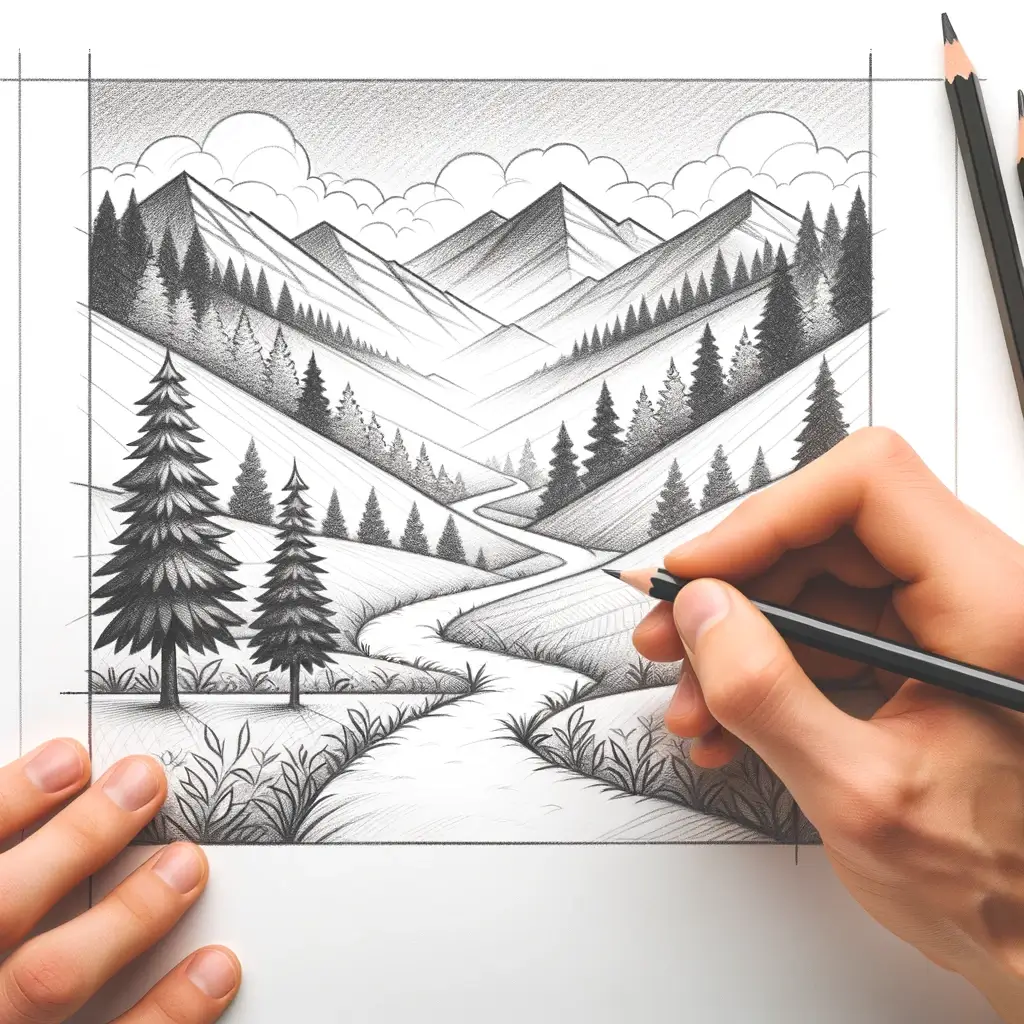
In this section, we will explore how to achieve depth in your landscape drawings by understanding the concept of depth and using techniques like foreground, middle ground, and background.
Understanding the Concept of Depth
Depth in a landscape drawing refers to the perception of distance and three-dimensionality. It allows you to create a sense of space and realism on a two-dimensional surface. Understanding the concept of depth involves mastering techniques that create the illusion of distance and objects appearing closer or farther away.
To achieve depth, you can use various techniques such as atmospheric perspective, overlapping, and size variation. Atmospheric perspective involves creating the illusion of distance by making objects in the background appear lighter, less detailed, and bluer, while objects in the foreground are darker, more detailed, and have warmer colors. Overlapping is another technique where objects in the foreground overlap those in the background, giving the impression of depth. Size variation involves making objects that are closer to the viewer appear larger, while those farther away appear smaller.
Creating Depth with Foreground, Middle Ground, and Background
One effective way to create depth in your landscape pencil drawings is by utilizing the concept of foreground, middle ground, and background.
The foreground is the area closest to the viewer and usually includes objects or elements that anchor the composition. It helps to establish a sense of scale and depth. When drawing the foreground, pay attention to the level of detail and use darker values to make objects appear closer.
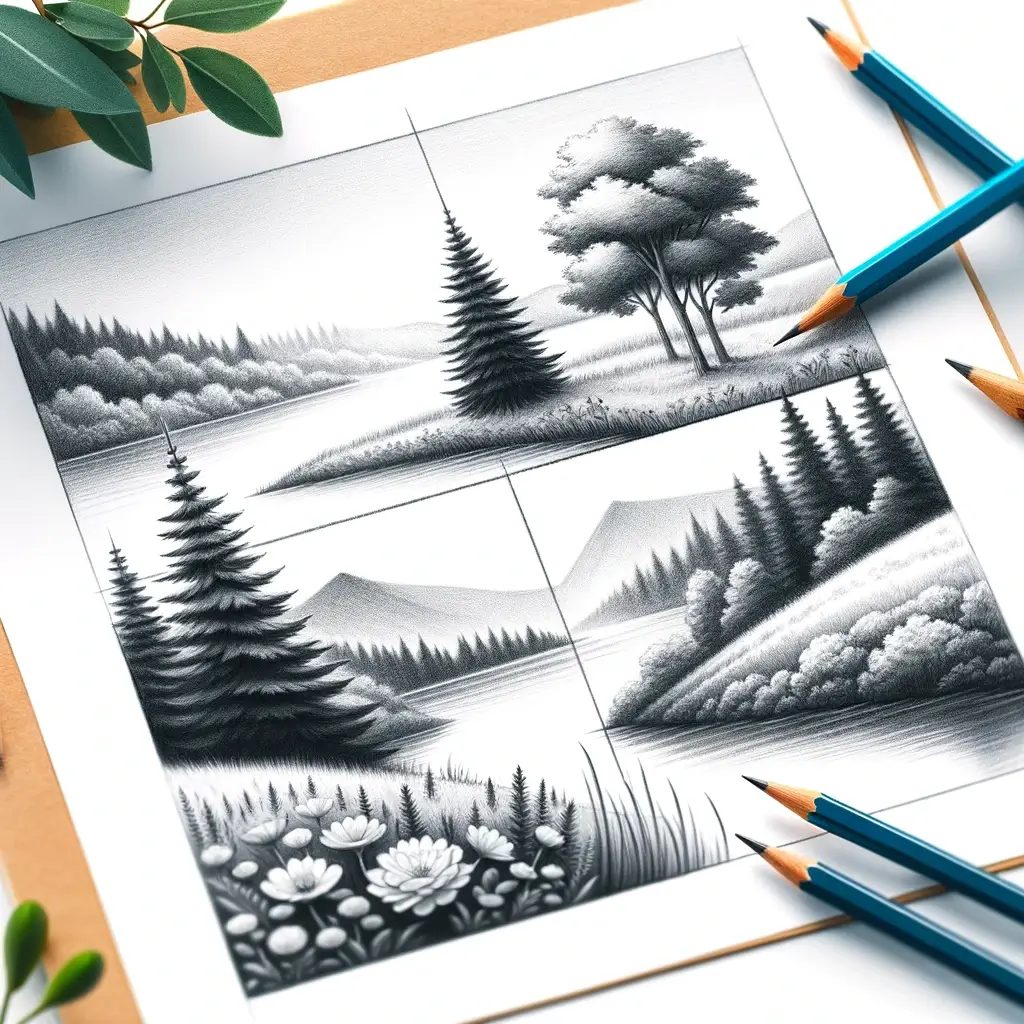
The middle ground is the area between the foreground and background. It helps to create a sense of distance and adds depth to your drawing. Objects in the middle ground can be slightly less detailed and have lighter values compared to the foreground.
The background is the area farthest from the viewer and typically includes elements such as mountains, trees, or the sky. These elements are often less detailed, lighter in value, and have fewer contrasts compared to the foreground and middle ground.
By carefully considering the placement and rendering of objects in the foreground, middle ground, and background, you can create a convincing sense of depth in your landscape pencil drawings.
Remember to practice observation and patience as you develop your skills in adding depth and perspective to your drawings. Learning from references and tutorials can also provide valuable insights and techniques to enhance your abilities. By exploring different techniques and styles, you can continue to improve and express your unique artistic vision through landscape pencil drawings.
Expressing Yourself through Landscape Drawings
Landscape drawings provide a wonderful opportunity for artistic expression and personal style. As you embark on your journey of creating landscape pencil drawings, you can add your personal touch and experiment with different themes and moods to make your artwork truly unique.
Adding Personal Touch and Style
One of the joys of landscape drawings is the ability to infuse them with your personal touch and style. This can be achieved through various artistic choices, such as the use of different pencil strokes, shading techniques, and composition.
Experiment with different types of pencil strokes to create textures and patterns that resonate with your artistic vision. Whether it’s using hatching, cross-hatching, or stippling, each stroke adds a different feel to your artwork. By varying the pressure and direction of your strokes, you can create depth and dimension in your landscape.
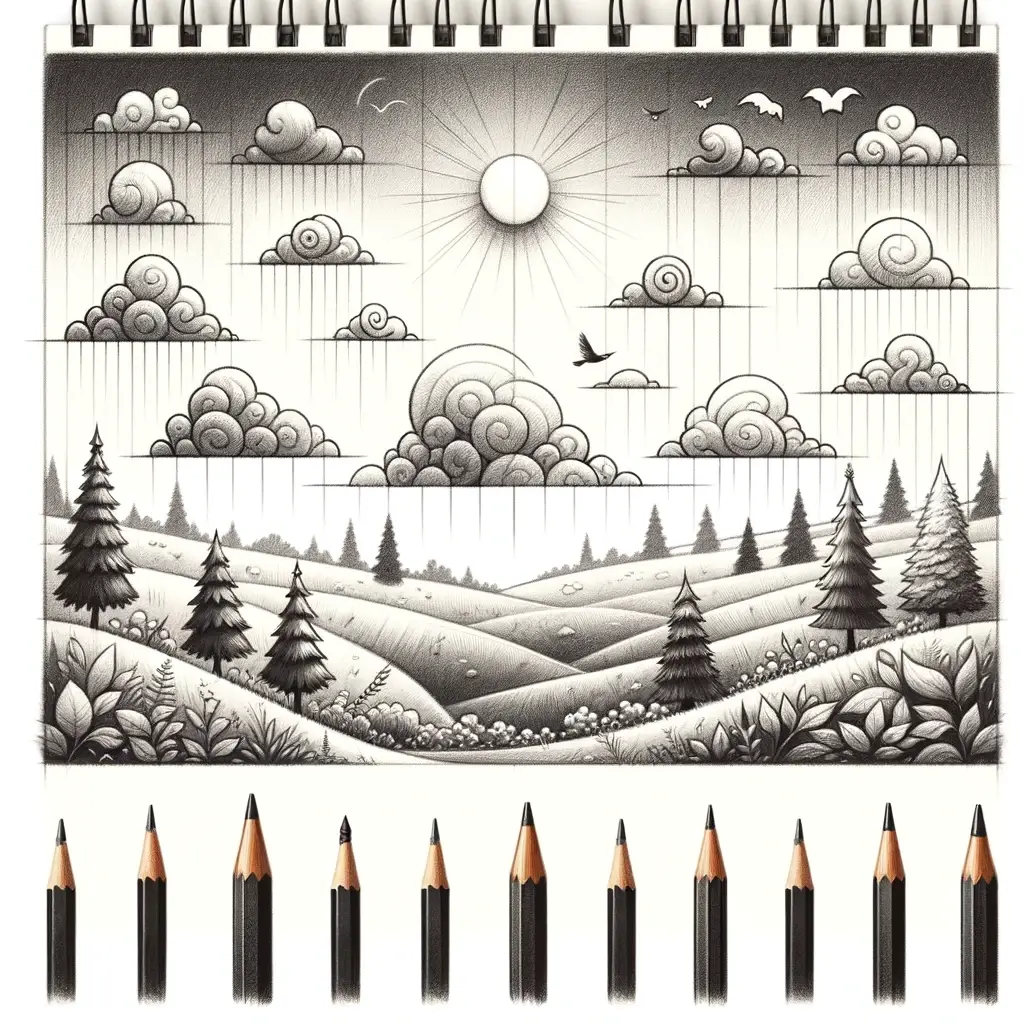
Additionally, explore different shading techniques to bring life to your drawings. Gradually building up layers of shading, blending with a tortillon or a soft cloth, and using erasers for highlights are just a few techniques that can enhance the realism and overall aesthetic of your artwork.
Don’t be afraid to break away from traditional techniques and explore your unique style. Whether it’s using bold lines, incorporating abstract elements, or adding whimsical touches, your style will shine through and make your landscape drawings truly one-of-a-kind.
Experimenting with Different Themes and Moods
Landscape drawings offer a wide range of themes and moods to explore. You can experiment with different settings, seasons, and times of day to evoke specific emotions and create a captivating atmosphere.
Consider drawing landscapes that resonate with you. It could be a serene beach scene, a cozy cottage nestled in the mountains, or a bustling cityscape. By choosing themes that inspire you, you’ll be more motivated to bring your artistic vision to life.
Exploring different moods in your landscape drawings can add depth and intrigue to your artwork. A vibrant and sunny landscape might evoke feelings of joy and warmth, while a misty and mysterious scene might create a sense of intrigue and curiosity. Experiment with various lighting effects, color schemes, and weather conditions to convey different emotions and capture the essence of the scene.
Remember to allow yourself the freedom to experiment and explore. Every landscape you create is an opportunity to discover new techniques, themes, and moods that resonate with you. Embrace the process of self-expression and enjoy the journey as you create stunning landscape pencil drawings.
As you continue your exploration of landscape drawings, be sure to check out our other articles on colored pencil drawing, animal pencil drawing, realistic pencil drawing, and pencil drawing for beginners for further inspiration and guidance.
Tips for Success in Landscape Pencil Drawings
Creating stunning landscape pencil drawings requires practice, dedication, and a willingness to learn and explore. Here are some valuable tips to help you succeed in your artistic journey:
Practicing Observation and Patience
Observation is a fundamental skill for any artist. Take the time to closely observe the landscapes around you, paying attention to the intricate details, textures, and lighting. Practice sketching quick studies of different elements in nature, such as trees, rocks, and water, to improve your observation skills.
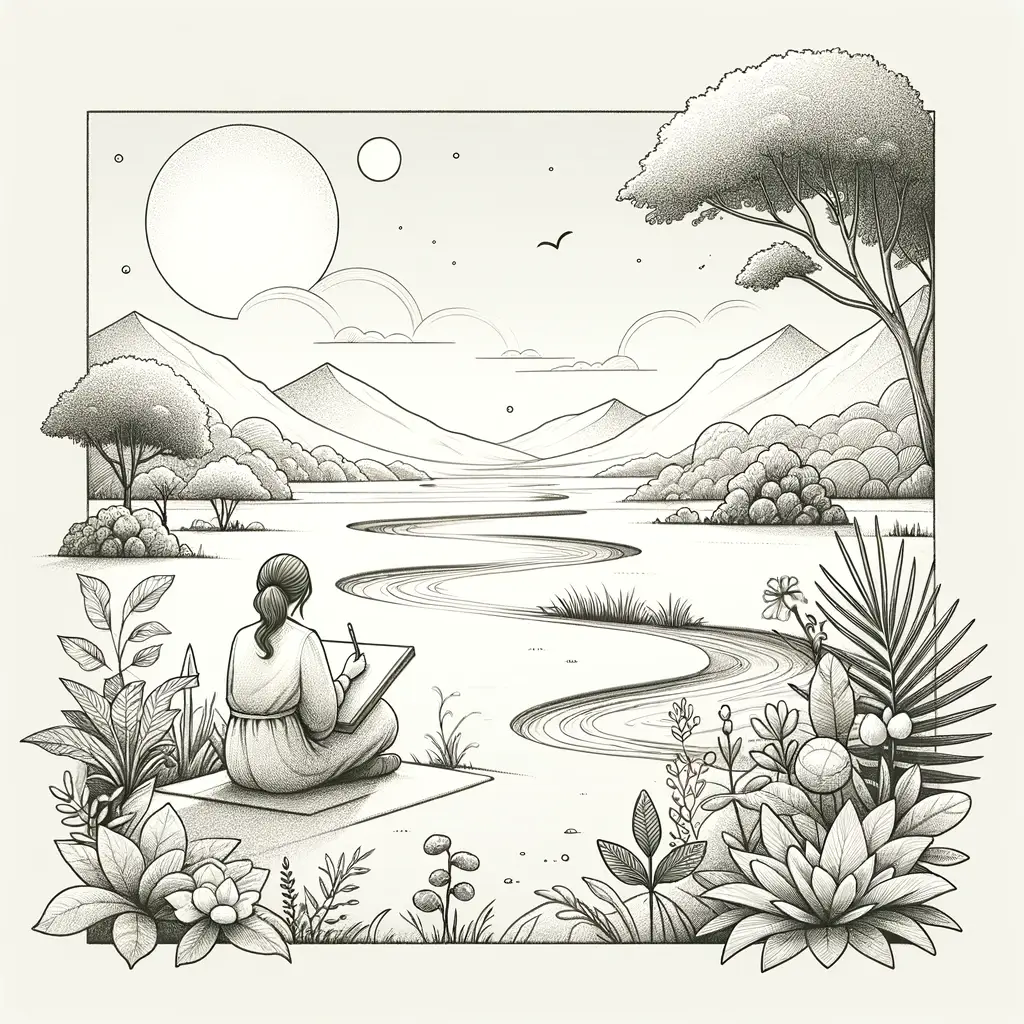
Patience is also key when it comes to landscape drawings. Remember that creating a masterpiece takes time and effort. Don’t rush the process and allow yourself to enjoy every step of the creative journey.
Learning from References and Tutorials
References and tutorials can be valuable resources for enhancing your landscape pencil drawings. Study photographs, paintings, and other artworks that capture landscapes to gain inspiration and learn new techniques. Look for tutorials that provide step-by-step guidance on specific aspects of landscape drawing, such as drawing clouds or creating realistic trees. By learning from the experiences and knowledge of others, you can expand your skills and develop your unique style.
Draw like a PRO in 30 daysExploring Different Techniques and Styles
Don’t be afraid to experiment with different techniques and styles in your landscape pencil drawings. Try using various shading techniques, such as hatching, cross-hatching, or stippling, to add depth and texture to your artwork. You can also explore different pencil types and grades to achieve different effects. Additionally, consider incorporating elements from other art forms, such as colored pencil drawing or charcoal pencil drawing, to add unique touches to your landscapes. By exploring different techniques and styles, you can discover what resonates with you and develop your artistic voice.
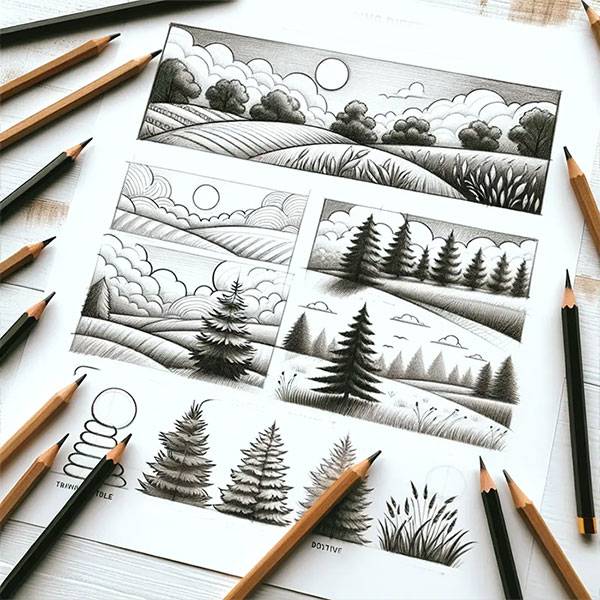
Remember, the key to success in landscape pencil drawings lies in practice, perseverance, and a genuine passion for the art form. Keep honing your skills, seeking inspiration, and embracing your creative expression. With time and dedication, you will continue to grow as an artist and create breathtaking landscape pencil drawings.

